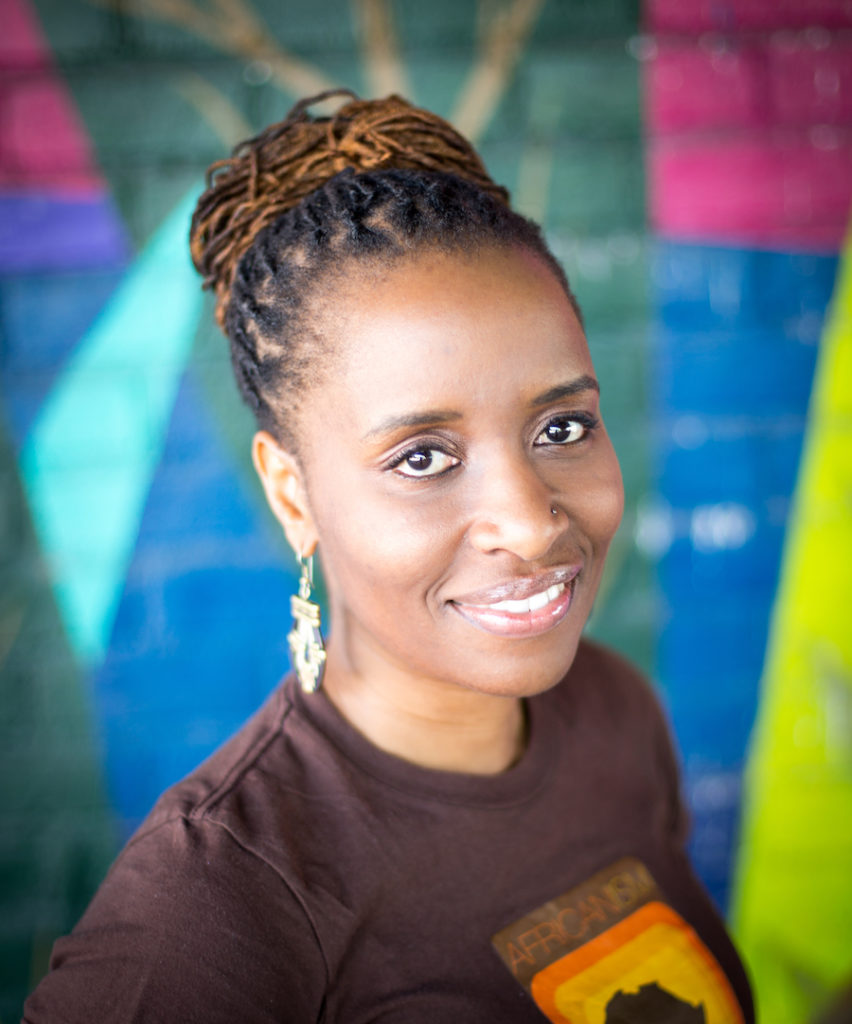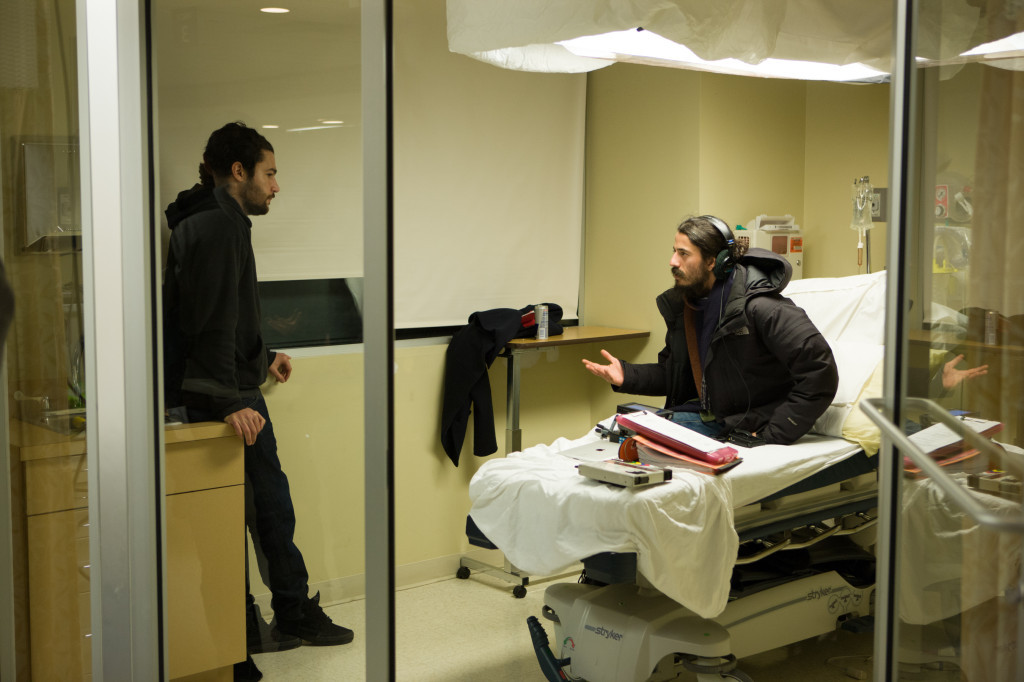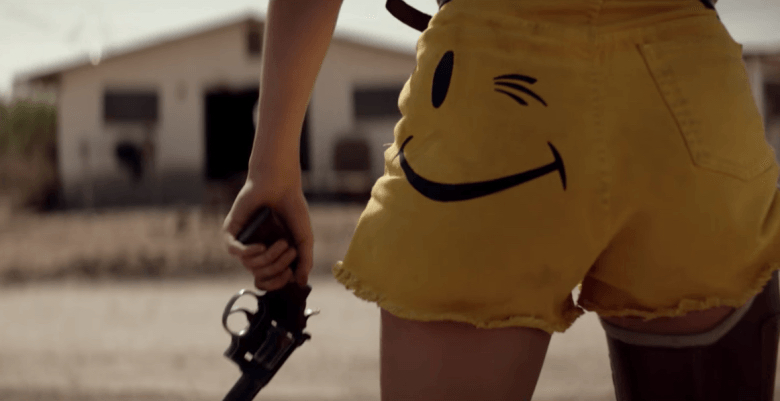When EKWA MSANGI brought her film FAREWELL AMOR to the 2020 Sundance Film Festival, it may have been her first outing as a feature director, but the story has been with her for decades. Inspired by the experiences of her own family members, Farewell Amor follows the reunification of an Angolan immigrant family. After 17 years apart, New York City taxi driver Walter (Ntare Guma Mbaho Mwine) is finally being joined in the U.S. by his wife Esther (Zainab Jah) and teenage daughter Sylvia (Jayme Lawson), who must adjust to a new country and an unfamiliar family dynamic.
Born in Oakland, CA, Msangi and her family moved to Kenya when she was five years old. But even while growing up in Africa, much of the media she consumed came from outside the continent. Msangi returned to the U.S. at age 17 to attend NYU’s Tisch School of the Arts, where she honed the skills to bring her own stories, culture, and voice to the screen. Prior to her feature debut, Ekwa co-created MNET’s first-ever Kenyan original one-hour drama series The Agency, and made the short films Taharuki and Soko Sonko (The Market King).
IFC Films will release Farewell Amor in theaters and On Demand on December 11. We had a chance to talk with writer/director/producer Ekwa Msangi about the writing and making of the film, location emergencies, how a local film festival shaped her cinema education, and more.
——
COLIN McCORMACK: You’ve mentioned before that the film is partly inspired by the experiences of your aunt and uncle. At what point did you start thinking of it as a potential story that you could bring to the screen as a filmmaker?
EKWA MSANGI: That’s a great question. You know, I think it was when I started thinking about it in imagery and not just as this tale that had been in the family for a very long time – because they have been separated for over 20 years. But I started thinking about the images and also the “What if?” “What if things changed?” “What if Auntie got her visa?” “What would happen?” Being curious to follow that thread and see where it led is where I started working on the story. The image I held in my mind for a long time with the “What if?” was my uncle at the arrivals hall at the airport with the family; all the things he’d be thinking and wondering and feeling. Would he recognize them? What would he say? What would it be like? So I kind of took it from there as an exploration.
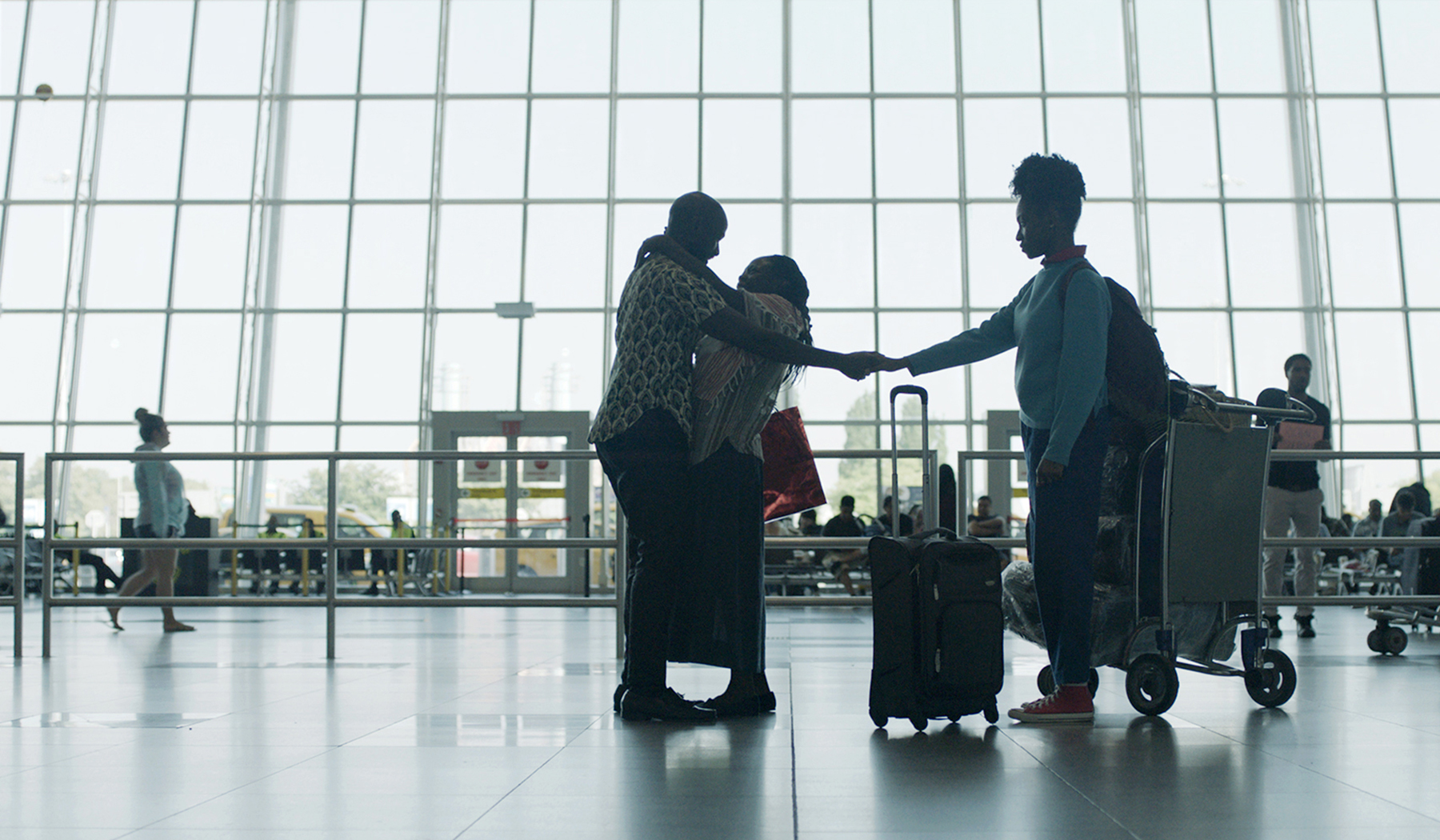
CM: In terms of thinking about imagery, did you have a deep connection to cinema or art your whole life growing up?
EM: To art, yes. Not necessarily to cinema or the creation of cinema. But I did grow up in a family of artists; my father was a graphic designer and a painter, as is my uncle and my brother. And then music is a very big part of my life, and dance. So I always knew that I was going to be an artist of some sort. Cinema came about really as a response to a lack of images in our media. Growing up in Kenya in the ’80s and ’90s, when all of our programming was imported from outside and there were no stories or images or films or series that reflected the very colorful and interesting lives I saw around me all the time, that irritated me. So while I come from a family of artists, I am the first to embark in cinema as an art form.
CM: Where did you first start discovering African cinema? Was that in film school? Obviously, before the internet, you had to search a little harder and look under more rocks than people have to now.
EM: Unfortunately, growing up on the continent, I never got to see African cinema at all because of the colonial nature of how African cinema had been done in a pre-digital age when most cinema happened in the Francophone countries and Anglophone countries. They really dealt with TV and that was it. So it wasn’t until my last year of film school that I even knew about African cinema or African filmmakers that had been working for decades and decades making movies. At that point, I got connected with the New York African Film Festival, which was a wonderful education for me. I got connected with the African Film Festival and decided to study African cinema so that I could understand the ancestry and who had gone before me. Working at the film festival allowed me to watch all sorts of cinema from all over the continent and from the diaspora as well. It was an introduction that came at the end of my learning how to make films but then stirred a very specific focus for me in terms of the group of people I wanted to work with and the place I wanted to have my voice added to as my contribution in that particular arena.
CM: When you got started on Farewell Amor, it eventually turned into a short film [Farewell Meu Amor], kind of as a prequel to the feature. Did you know that that would be a jumping-off point to an eventual feature film, or did you think of it as a standalone [short] at that moment?
EM: No, that was actually a plan. My producing partner, Huriyyah Muhammad, I had been telling about the story and we’d been talking about it and trying to figure out how to write that. We decided to create the short as a proof-of-concept in order to help us gain momentum and gain support for the feature film. We had gotten a small cash award for a previous short film that we had worked on and it was a very tiny award, so we were only able to make a tiny, tiny film. So it wasn’t going to be able to have a whole airport scene or anything else in there, so I thought, “Okay, so maybe the moment before he goes to the airport – what would that be like?” He’s in his house, it’s just him and maybe one other person, so maybe take it from there as a way to help us gain momentum for the feature.
CM: When you were expanding that idea into the feature script, how did you end up deciding to structure the film around the three different points of view of the family?
EM: Because the short focused on Walter’s character and when I started working on the feature I had just come off of the short, that was freshest in my mind and it was easy to start writing Walter’s character. But it felt a little cliché to write a story about a guy who has an affair and his problems [laughs]. So I thought, “Well, maybe I’ll do it from his daughter’s perspective.” But I was afraid that if I had a film about a young teen with dance elements in it it would be thrown into the bucket of a typical “teen dance movie” and I didn’t want it to be relegated to that or reduced to just that. So I decided to do both of their perspectives and initially, it was just the two perspectives, Sylvia’s and Walter’s. And then six to eight months into the process, it was pretty clear that Esther’s story was the lynchpin for both of their stories and it didn’t make sense not to have her story in it as well. So I decided at that point to make it a triptych and have all three perspectives, which kind of intrigues on this idea that the three of them are all experiencing this one victorious event of their reunion. We have a lot of assumptions of, They must all feel great! They must be so excited! And they are, but they’re also experiencing a whole bunch of other things that are specific to each character. So I wanted to explore each and not sacrifice one perspective for the sake of someone else’s perspective.
CM: What were your first steps once you finished the feature-length script?
EM: While I was working on the feature script, we were already pitching the project. We had been accepted to a number of development programs from Tribeca All Access, my producer got into the Sundance Creative Producing Lab, we got into a few screenwriting programs, Cine Qua Non Screenwriting Lab, and then finally we got into the Sundance Screenwriters Lab. And we had been pitching the whole time at IFP and all these other places promising the story and promising the script that will be ready any minute now. By the time the script was ready, we had to show it to people at that point because it was really at that make or break time. Alright, either you’re going to show this and try to get some money or that’s the end. Forget it. So as soon as we finished the script, we were at that point sending it to investors who were really excited about it, happily. Then we started to negotiate how to get investments, how to get money to support the project, and going into casting and do all the fun things to get the script off the ground.
CM: How did those experiences at the various labs and development programs shape the film? Did your vision stay intact from beginning to end and it was more about the connections you made at the labs?
EM: I would say my vision stayed intact. There were several questions along the way of, for example, whether we should tell it as a triptych. “Are you really sure? Maybe it should just be linear. You might be trying to do too much.” And I was really determined to keep it as a triptych and I really liked that idea. So at that point, they were all sort of like, “Alright, well if that’s what you want to do, let’s help you to make it the best that you can.” So I got a lot of really wonderful mentors from the different labs who were able to really help me lean into what I was trying to develop and asked a lot of questions and eliminated places that might have needed more work or reacted to things they felt were really strong. Definitely networking for sure, and really supporting and augmenting what we had set out to do, as opposed to changing or altering anything along the way. I would say our experience was heightened. Also, our process for finding financial support for the film and that kind of thing was shortened through going to the different labs because we had kind of been vetted already. People were able to come to us knowing that we weren’t just two chicks from somewhere on the corner [laughs]. We had been through the hands of many other professionals, so they were talking to people who had some support and backing as well.
CM: And I would assume during the writing that would help as a motivating factor to power through when you knew you had a waiting audience ready to read it.
EM: Right, absolutely. Absolutely. And also knowing that we weren’t going to move any further unless we had not only a script, but a really, really strong script. Because I had been talking it up for about a year, so it was like, Oh my God, you’ve created so much anticipation! You have to be able to deliver on this. It was terrifying, but really gratifying when people came back and were so excited about the story.
CM: When you got into the casting process, what was that experience like for you?
EM: It was a wonderful, wonderful experience. We were very nervous going in, especially for the Sylvia character because we didn’t really know who was out there. It would be a fresh face that we were looking for. We needed a character who could be so many things: To dance, to be able to perform the accent well, to act, to be older but act younger, all of these specific things. We started with Sylvia and were really nervous about it, but we had a wonderful casting director [Rebecca Dealy], who really understood the story and the script and the characters involved in a way that was so illuminating, even for me as a director, where she was explaining certain things to me from her perspective as somebody working with actors. I was like, “Oh, I get it. I see what would be useful to look for.” So I had a wonderful experience with the casting.
Most of our actors came through casting. The only one who was an offer was Ntare Guma Mbaho Mwine, who plays Walter. He was an old friend and is also a wonderful filmmaker and our short films had traveled together to different festivals in the past; he’s also from East Africa. So for years we had been trying to work together on different projects and nothing had come up, so I decided to offer him the role and was so excited that he accepted it. And then trying to find synergy, trying to find the family that was him and Sylvia, and then we kind of complemented and rounded it all out.
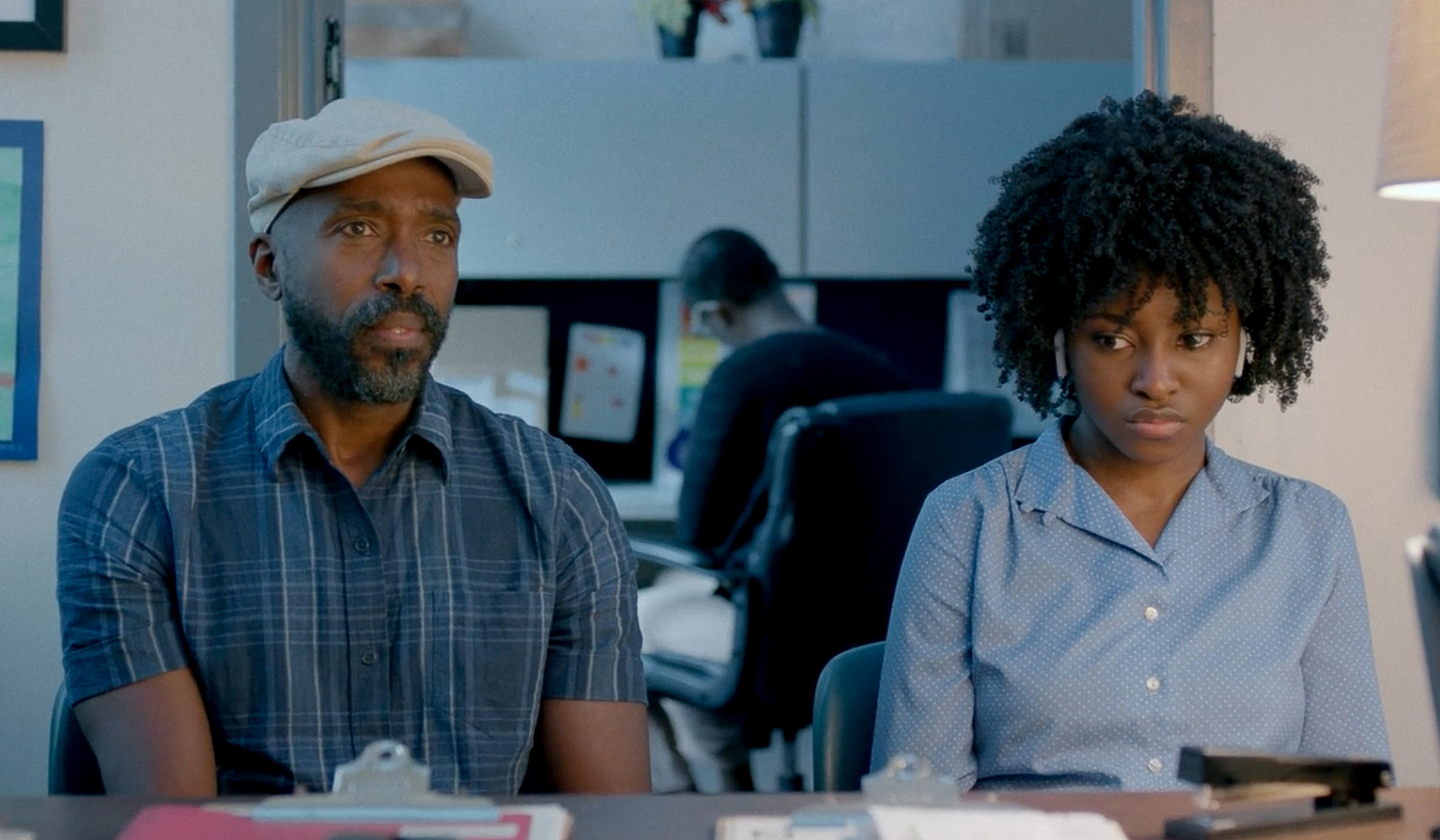
CM: Filming on a lower budget in New York City, including scenes at an airport, a lot of scenes in a small apartment, not to mention a dance recital, you must have had some interesting behind-the-scenes problem solving you had to pull off.
EM: Well, because we didn’t know from the beginning that we’d get the kind of support that we ended up getting, we had started sort of “soft” production – or least attempted – at least seven months to a year before, where my producer Huriyyah was going around to different places and different vendors talking to people and getting to know people and setting the groundwork for, “We’re going to be coming around and asking for favors soon,” which was wonderful. So most of it was really smooth.
I will say, the one part that was hugely stressful and very critical was the apartment. We spent a lot of time looking for the apartment because we really wanted to shoot on location and it was going to cost us way too much to try to recreate that delicious, lived-in, old New York style apartment that was tight enough that was good for the story but had enough space that we could actually fit our cast and our crew in at the same time. We found a place that was wonderful and crusty and had the dust marks and everything and the location fell through like three days before we needed to shoot there. It was a disaster [laughs].
But because we had spent about seven months papering and canvassing neighborhoods looking for the apartment, we had some backups. At that point, we needed to find something that was the exact same layout that we had planned for because we didn’t have time to redo our plans. And we found something that was the exact same layout. It actually worked much better because when we started shooting there, we didn’t quite know what was going to happen for the neighbor’s apartment. So we started shooting in the main apartment and were negotiating and trying to figure out what would happen with the neighbor [location]. And the literal neighbor of the apartment we were shooting in was so excited that we were shooting a film in her building that she was like, “You can use my apartment.” So we got the neighbor to let us shoot there as the neighbor’s apartment. It was a lucky coincidence and we used it exactly as she had it set up, we literally just threw one or two fabrics in there and everything was exactly as we needed it to be. It was really, really wonderful.
CM: That’s amazing. How long was your filming schedule?
EM: We shot for about 23 days over five weeks. It was the dead of summer in New York City in this tiny, tiny apartment. It had challenges, for sure. We also had a really tight schedule because two of our actors, Ntare and Marcus [Scribner], are both on very big TV shows and their schedules are completely controlled by those, so we had to finish their scenes by a certain time for us to be able to use them at all. Those were the wonderful things we were up against.
CM: You obviously had a specific structure in mind when you were writing, but did anything surprise you once you were building it in the edit in post-production?
EM: Yeah, there were a number of things that were wonderful to watch – the slow, moodiness of different parts – that in reality weren’t working quite as well. So there were a few places where we needed to increase the pace or cut down some of the lines, things like that. But it was actually a wonderful experience trying to create a rhythm for all three of the characters. We ended up working with two editors [Jeanne Applegate and Justin Chan] to try to create that, so that was a lot of fun.
CM: To wrap things up, what’s next for you?
EM: I do have a project on-deck that I’m excited about. Unfortunately, I’m not able to be talking about it yet. But it is a project that is quite a bit bigger than Farewell Amor. It’s a period piece that takes place in the ’50s in the South and it’s based on an African-American family. It’s something that I’m really excited to be able to explore. Once we figure out our COVID plan and all these other things, that’s going to be the next project on-deck.
__
A big thanks to Ekwa for discussing FARWELL AMOR. Learn more about the film at farewellamor.movie or follow the film on Facebook or Instagram.
This interview has been edited for clarity.
If you’re an independent filmmaker or know of an independent film-related topic we should write about, email blogadmin@sagindie.org for consideration.

